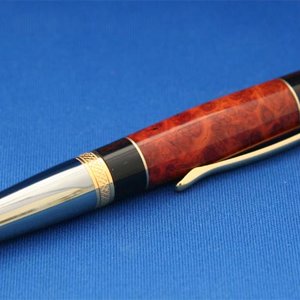Chrisrsnow
Member
Hello all and thank you in advance for all of your support and suggestions here. I have learned a lot since discovering this website a couple years ago. I have been making simple segmented blanks on my own for a few years now, mostly just gluing woods together or the occasional resin and wood glue-ups. I started using old gift cards a couple years ago, but had difficulty sourcing them until a recent discovery on amazon where I could purchase blank cards for this purpose. I've also used some veneers, though they are difficult to come by locally and very expensive when I do find some online. I recently discovered that my local metal warehouse which sells brass and copper also sells small pieces as fall offs from custom cut orders. I recently acquired a small stash of thin (1/16" or similar) brass and copper as well as some bluish mystery metal. I'd like to try using these as dividers for segmenting, but I am very nervous as to how well they will bond with other surfaces using epoxy, and how quickly they will dull out or possibly even destroy my tools. I do have a set of carbide insert tools that I planned to use for this, but I was curious if anyone else had used these in the past and had any input or suggestions?

